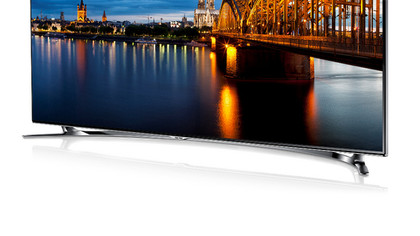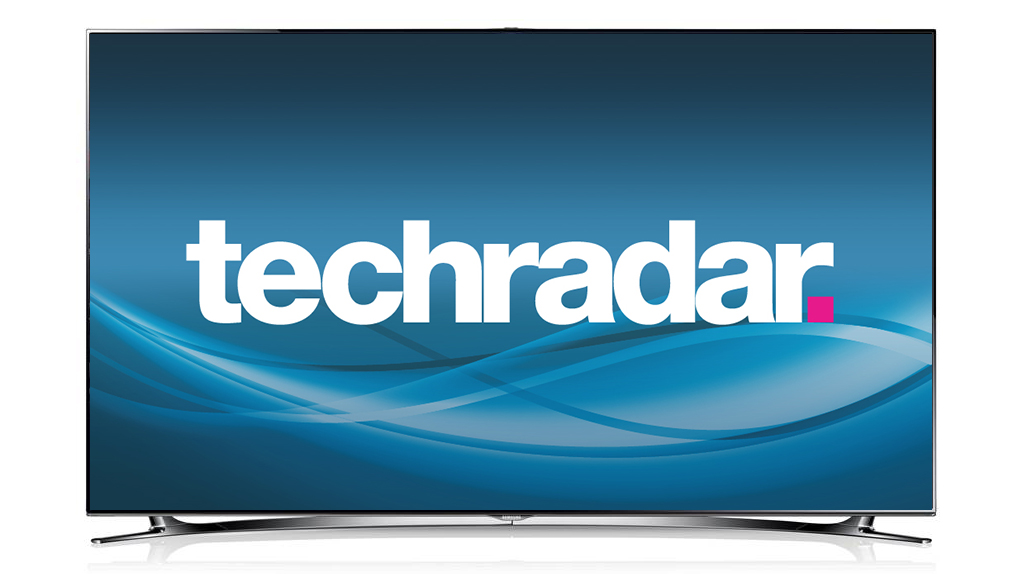TechRadar Verdict
The Samsung UE55F8000 has thrown down the gauntlet to the rest of the TV world. Now we just have to see if anyone else has the skills and the confidence to pick it up.
Pros
- +
Stunning design
- +
Outstanding picture quality
- +
Sophisticated online features
- +
Excellent touchpad remote control
Cons
- -
Smart interface can confuse
- -
Poor picture presets
- -
Gesture/voice controls are unconvincing
- -
Very wide stand design
Why you can trust TechRadar
Samsung has an uncanny knack of kicking the new TV season off each year by unleashing its all-singing, all-dancing flagship TVs ahead of the competition, setting a high bar right away for rivals to aim for, and establishing a positive buzz around the brand that seems to carry it throughout the year.
It's no surprise, then, to find 2013's new television season being introduced by Samsung's latest flagship 55-inch LED TV, the Samsung UE55F8000, priced at £2,500 (around US$3,782/ AU$3,635).
And it's also no surprise to find this set packing an almighty punch on all three key fronts of design, performance and features.

The design boasts what appears to be the trimmest bezel ever - under half a centimetre across - as well as a gorgeously finished and robust rear that makes last year's ES8000 flagship TVs such as the Samsung UE55ES8000 and Samsung UE46ES8000 look flimsy by comparison. Underneath the TV is an arch design desktop stand that pokes out at each corner while curving around the back of the TV.
Features of the new Samsung UE55F8000 are dominated by a revamped smart TV system, complete with a brand new multiple home screen interface and the facility to 'learn' what you like to watch.
Meanwhile, a quad-core processor is there to enable some seriously smart antics, making the TV about 3.5 times faster than previous incarnations, and more capable of multitasking.

As for performance, for now let's just say that Samsung has finally solved its old problem with backlight inconsistency, instantly shifting its picture quality to a whole new level. More on all this later in the review, of course.
Sign up for breaking news, reviews, opinion, top tech deals, and more.
The Samsung UE55F8000's £2,500 (around US$3,782/ AU$3,635) asking price isn't cheap, it has to be said.
Its smaller brother, the 40-inch UE40F8000, sells for £1,450 (around US$2,194/ AU$2,108), and the mid-range 46-inch UE46F8000 costs £1,900 (around US$2,875/ AU$2,762), but of course these offer less screen real estate to enjoy.

So if the price of the UE55F800 is a bit high for you, but you want a big screen, you can step down to Samsung's F7000 models. These still offer more or less the same level of feature functionality, but save you a couple of hundred quid by not using such a high-grade panel/microdimming combination.
In terms of rival models, it's tricky right now given that no other brands have yet brought out their 2013 flagship TVs. Looking at 2012 models still on sale, though, easily the most persuasive competitor would be the Sony KDL-55HX853, which lacks the design prowess of the Samsung and boasts a less sophisticated smart services engine, but uses local dimming in its edge LED array to deliver exceptionally punchy pictures.
Otherwise the most intriguing model to put up against the Samsung UE55F8000 would be a plasma model: the Panasonic TX-P55VT50. This lacks the design finesse and aggressive brightness and colours of the Samsung model, but it delivers peerless contrast and exceptionally natural motion handling.

John has been writing about home entertainment technology for more than two decades - an especially impressive feat considering he still claims to only be 35 years old (yeah, right). In that time he’s reviewed hundreds if not thousands of TVs, projectors and speakers, and spent frankly far too long sitting by himself in a dark room.
